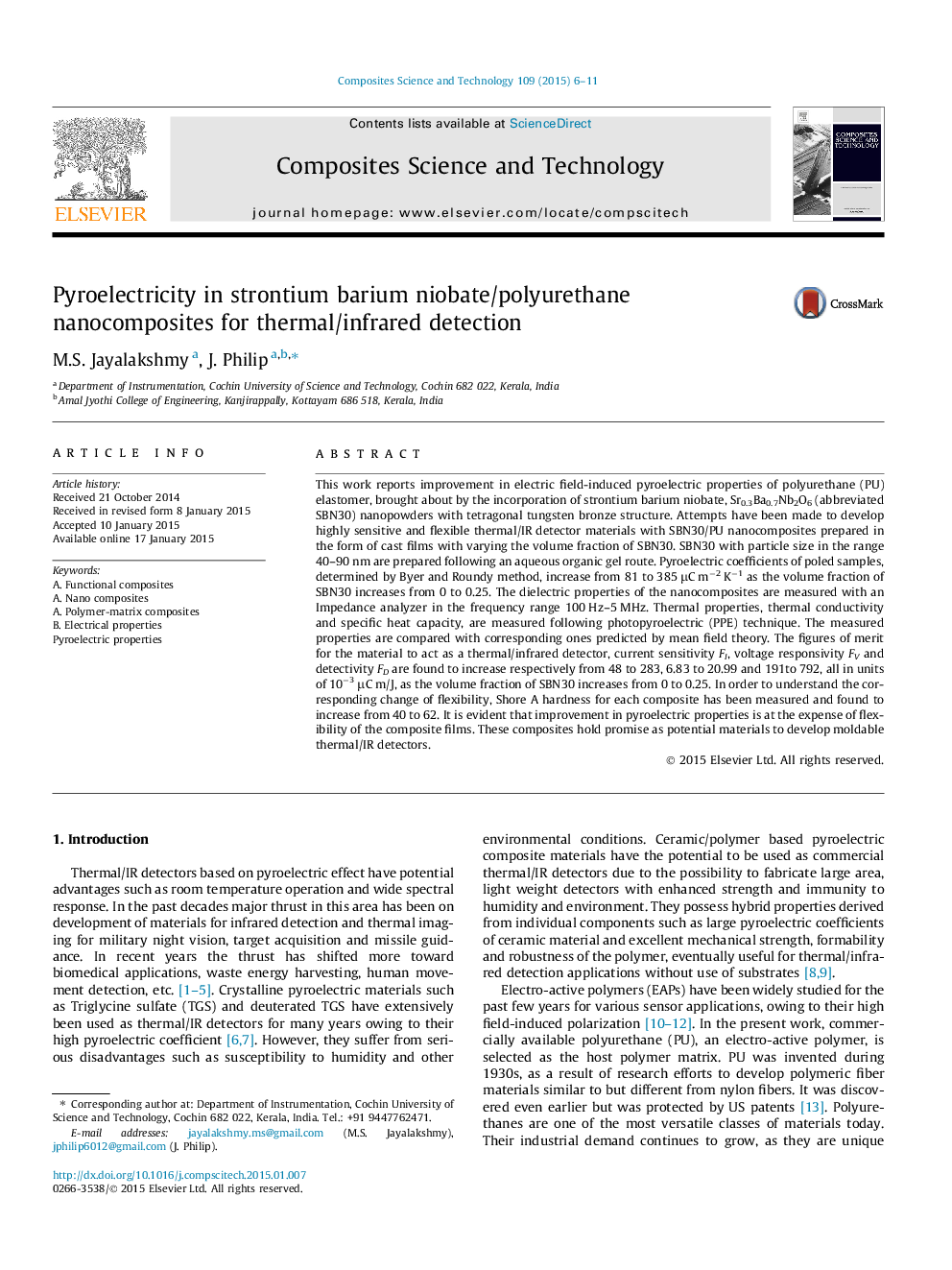| کد مقاله | کد نشریه | سال انتشار | مقاله انگلیسی | نسخه تمام متن |
|---|---|---|---|---|
| 820165 | 1469516 | 2015 | 6 صفحه PDF | دانلود رایگان |

This work reports improvement in electric field-induced pyroelectric properties of polyurethane (PU) elastomer, brought about by the incorporation of strontium barium niobate, Sr0.3Ba0.7Nb2O6 (abbreviated SBN30) nanopowders with tetragonal tungsten bronze structure. Attempts have been made to develop highly sensitive and flexible thermal/IR detector materials with SBN30/PU nanocomposites prepared in the form of cast films with varying the volume fraction of SBN30. SBN30 with particle size in the range 40–90 nm are prepared following an aqueous organic gel route. Pyroelectric coefficients of poled samples, determined by Byer and Roundy method, increase from 81 to 385 μC m−2 K−1 as the volume fraction of SBN30 increases from 0 to 0.25. The dielectric properties of the nanocomposites are measured with an Impedance analyzer in the frequency range 100 Hz–5 MHz. Thermal properties, thermal conductivity and specific heat capacity, are measured following photopyroelectric (PPE) technique. The measured properties are compared with corresponding ones predicted by mean field theory. The figures of merit for the material to act as a thermal/infrared detector, current sensitivity FI, voltage responsivity FV and detectivity FD are found to increase respectively from 48 to 283, 6.83 to 20.99 and 191to 792, all in units of 10−3 μC m/J, as the volume fraction of SBN30 increases from 0 to 0.25. In order to understand the corresponding change of flexibility, Shore A hardness for each composite has been measured and found to increase from 40 to 62. It is evident that improvement in pyroelectric properties is at the expense of flexibility of the composite films. These composites hold promise as potential materials to develop moldable thermal/IR detectors.
Journal: Composites Science and Technology - Volume 109, 10 March 2015, Pages 6–11